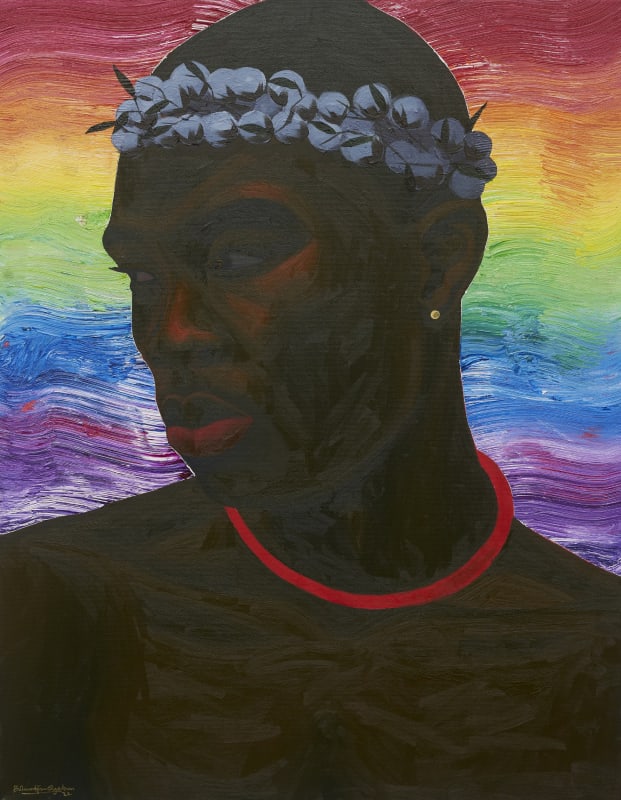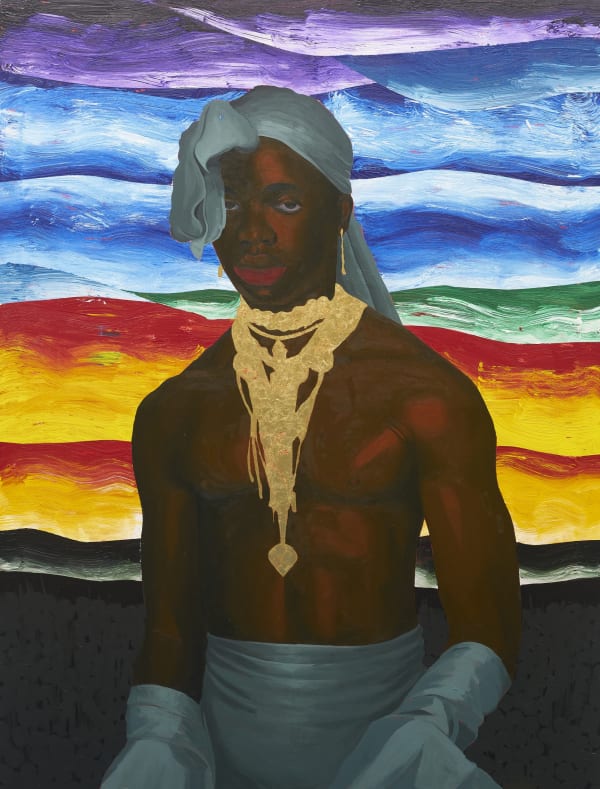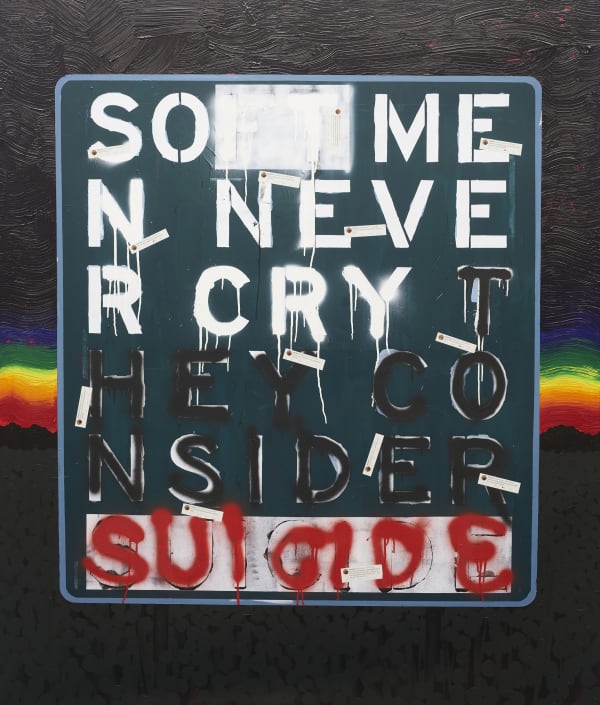Gallery 1957, Accra, is proud to present “For Boiz Like Me Who’ve Considered Suicide/When the Rainbow is Enuf”, a solo exhibition of works by artist Boluwatife Oyediran, adduced from Ntozake Shange’s 1975 choreopoem, “For Colored Girls Who Have Considered Suicide/ When the Rainbow is Enuf”. The exhibition will run from 11th August, 2022- 7th September, 2022.
“…Black men are expected to be high achievers, to make it at all costs, to be bread-winners. When it's tough they must not cry, break down or show vulnerability. It almost reads like the opposite of that part of Chimamanda Adichie's essay Beyoncé quotes in "Flawless". What the society does not understand is that these expectations are consuming the 21st century black male…”
-Boluwatife Oyediran
For his second solo show, Boluwatife Oyediran draws inspiration from multiple sources. While his mission to use figuration to correct and add nuanced representations of non-white characters remains intact, in this new body of works titled “For Boiz Like Me Who’ve Considered Suicide / When the Rainbow is Enuf”, the writer and painter explores Black Masculinity through three key notions/symbols: suicide, rainbow and cotton.
The artist preferred the term “Boiz” to the too common and heavily charged phrase “Black Men”. The choice of the word ‘Boiz’ rather than Men could be indicative of a longing for a long gone childhood and feelings associated with that period: innocence, thoughtlessness, lightness and softness. Feelings that emanate and radiate from some of the artworks. Here, the protagonists seem to have freed themselves from any judgmental gaze, daring to endorse flamboyant outfits and shimmering imposing gold-leaf jewellery, staring boldly but not defiantly at the viewer. “Boiz”, used in many slangs over the world, becomes a federator term that erases borders and creates community. A community of Black men worldwide ‘who’ve considered suicide / when the rainbow is enuf’. The men who seem to have it all and struggle emotionally, the Black men who seem (on the outside) to be alright when anxiety and suicidal thoughts are overwhelming and debilitating. As it reads on one of the canvases, “soft men never cry, they consider suicide”, most likely because the most common representations, reduce Black men to very few archetypes – macho man, violent man, silent man brewed in patriarchy and racism.
Oyediran’s works shift the fallacious narrative that presents economically developed countries as self-made countries to a new more accurate one, centred on the crucial role Black people played in the world’s industrialisation and development as well as the traumatic experience it constitutes. A physical and psychological trauma that transcends time, geographies and generations. This visually translates as subtle greyish touches of paint, minuscule fluffy cotton buds, quasi imperceptible backgrounds of cotton fields. As elusive as it may appear on some canvases, the cotton is actually omnipresent as an allegory of trauma and abuse of the Black body, contrasting with the inherent softness of cotton itself.
The rainbows are omnipresent. Depicted with thick coarse layers of acrylic paint, they contrast with the sophistically, gently applied thin layers of oil paint used for the bodies. The characters’ skin colour is obtained by applying several layers of paint, including a first layer of dripping blood-like vermillion paint, imperceptible by the viewer, as an analogy of the trauma boiz carry around, a trauma buried deep down, invisible to the outside world. The delicate characters seem affixed to the background, ready to jump out of the frame and start a new life, the life they chose. A new start, that is what the rainbow may suggest, symbol of the sun rising after a rainy day. Interestingly here the rainbows are not accompanied by clear skies, but rather starless moonless deep blue skies as a reminder that hope thrives even through the darkest of times.
In definitive, Oyediran’s work celebrates Blackness, Black bodies, Black skin and Black identity in all their diversity, not only making a strong statement by diffusing feeling of pride but also producing new representations, new canons, for the Black man, by the Black man, of the multifaceted and unrestricted identities Black men can embrace.
-Extract from curatorial essay by Esse Dabla-Attikpo
























